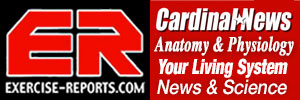resolution |ˌrezəˈloō sh ən|
noun
a firm decision to do or not to do something : she kept her resolution not to see Anne any more | a New Year’s resolution.
the quality of being determined or resolute : he handled the last French actions of the war with resolution.
——
Physical fitness conditioning often involves doing more activity and doing less eating or less drinking, so it figures that resolutions at New Year’s are often of a fitness nature:
“start going to the gym”
“eat less”
“drink less”
“do a chin-up”
The most important resolution is often left out:
“enjoy the process”
Getting started with a new fitness program is not fun if you are out of shape and you compare yourself to others who are in good shape. Not only is there some physical discomfort, but there can be some humiliation, too. That’s why you need to start gradually and enjoy the process. If your fitness program is going to succeed, it needs to be ongoing. If it’s going to be ongoing, there is no denying that there has to be some enjoyment. Pick something you like to do. And don’t partake too intensely. There is plenty of time to get intense. A good (and safe) program doesn’t incorporate intense activity until about four to six weeks. And unfortunately a lot of New Year’s fitness resolutions fail by February.
Write an Action Plan
An action plan helps you identify your goals. When you identify your goals, analyze the goals and figure how smaller, simpler goals will help you achieve the bigger goals. You can’t just say I want to look good and fit for new clothes in a wedding. You have to describe how you will work each body part to be fit. Shoulders defined. Waist thinner. You can’t just say you will run a 10K in a certain time. You need to understand the pace for the whole distance and be able to achieve that pace for at least one mile first. It is not just hour heart and lungs that get in shape either. Your foot and ankles have to adapt to be ready for the stress of the impact of running.
Visualize Success
As you identify your goals, visualize them. Imagine your success in carrying them through. Use photos, YouTube videos and a private blog to store your photos and videos to support your goals.
Identify, Eliminate or Adapt to Obstacles
It helps if you identify obstacles before you even start. Time constraints. Traffic. Antagonistic people. That’s right … a lot of friends would rather see you stick with the same dirty little habits that they have. Eliminate some of the obstacles before you even start. Don’t choose a health club that is too far from work or your home. The rule is to have the location of your workouts only 10 minutes from where you live or work. Try to schedule your workout at times other than 5:00 p.m. on a Monday. There are usually so many people at a gym at this time that it is difficult to get a machine to use, or there are waiting lines, or a lot of newbies mixed with regulars — a situation that creates sort of a subliminal unfriendly atmosphere.
Thrive on Failure
Don’t be a martyr and look for failure, but don’t let failure make you quit. Failure is delayed success. The success involved with increasing muscle strength is actually based upon failure. When the muscles are brought to failure with activity, they adapt to get stronger — so they don’t fail the next time. Sometimes failure is good. Failing all the time is bad, though.
Choose a Friend
Find a friend that is positive and reinforces a healthy and fit lifestyle. They can help you with your accountability.
Get Help from a Professional
A personal trainer can help you (1) select the right equipment and exercises, (2) perform with the proper technique and (3) produce the proper forces and energy output for optimal gains in human performance and body composition improvement. Personal trainers can also help with your accountability.
Create a Journal
Create a journal that works with your action plan. Note how you feel, mileage, body weight, body fat percentage, resistance lifted and diet, too. If there was an obstacle to your workout, write it down. It is great to look back and recognize accomplishments and it is also useful to see a reminder when your aspirations do not match up to reality. Journals are also helpful to use if you have high blood pressure or if you need to monitor blood sugar levels. It is good to coordinate your motivation, attitude, and performance with any health values that you can obtain. It is also important to note training errors and any musculoskeletal aches and pains. Often big details are not necessary, just a little hint of your status.
When fitness is one of your New Year’s resolutions, you have to nurture that resolution every day. It is not something you just do and forget about. Fitness is not like a material thing that you own. It is something you have to earn every day or almost every day. And that process, combined with a respect for yourself is the key to succeeding with a New Year’s fitness resolution. You have to enjoy that process.
